Expert Guide to Caring for Your Bearded Dragon
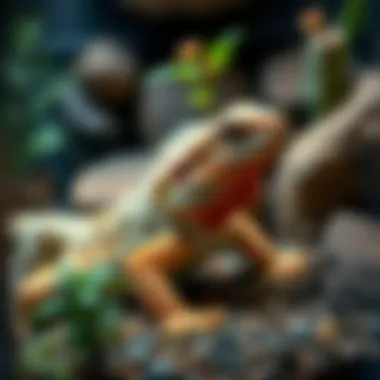
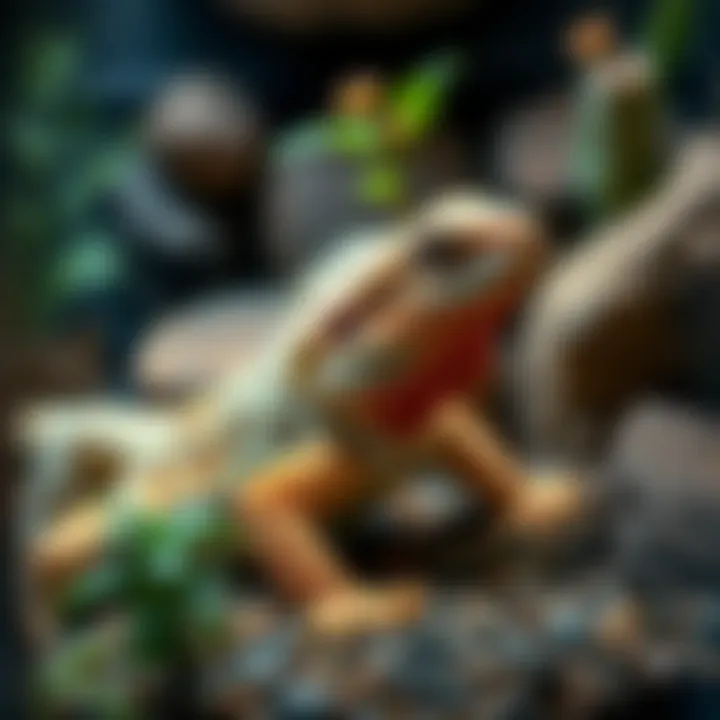
Intro
Caring for a bearded dragon is no small feat, and knowing what's at stake can truly chart the course for a successful relationship with these fascinating reptiles. As pets, they bring a unique charm and a plethora of experiences that can transform an owner's approach towards pet care. Understanding their specific needs isn't just beneficial; it's essential for fostering a healthy and happy environment for your scaly companion.
From basking in the sun to munching on tasty delicacies, bearded dragons have particular requirements that differ from other household pets, such as cats or dogs. This guide will shine a light on vital aspects such as habitat setup, dietary considerations, health monitoring, and behavioral training. With all the knowledge packed into these sections, current and prospective owners can navigate the world of bearded dragon care with confidence.
The journey of bearded dragon ownership often means exploring the intricacies of their behavior, enriching their lives with engaging activities, and connecting with a community that extends beyond individual ownership. This guide seeks not just to inform, but to empower pet owners to embrace the responsibility that comes with their fascinating reptilian buddies.
By addressing key areas of knowledge, we hope to provide clarity and insight that creates a nurturing space for both the pet and their human. Let's delve in and discover how to elevate your bearded dragon's life to new heights!
Prelude to Bearded Dragons
Caring for a bearded dragon isn’t just about providing food and a warm place to sleep. It's a journey into understanding a creature that has captured the hearts of many, with its unique behavior and need for a certain level of interaction. These reptiles, hailing from the arid regions of Australia, thrive under the right conditions and with the appropriate care. This introduction sets the stage for anyone considering these fascinating pets, showing the delicate balance between offering them a comfortable home and understanding their significant needs.
In this section, we will discuss the significance of grasping the essential traits and habits of bearded dragons. Knowing more about their natural environment and typical behavior helps potential owners make informed decisions. For instance, did you know they communicate not just through their appearance but also with body language? Understanding how they express fear or comfort can enhance not only their quality of life but also the bond you share.
Moreover, the bearded dragon's adaptability can sometimes mislead inexperienced owners into thinking they are low-maintenance pets. However, diving into this world without the right preparation can lead to complications. A comprehensive understanding can mitigate these challenges, ensuring a healthier, happier dragon, possibly avoiding common pitfalls such as inappropriate diets or poor habitat setups.
By taking the time to learn about bearded dragons, prospective owners can ensure that they are ready to provide an enriching environment that supports their new pet's wellbeing. Providing not just the bare minimum but creating a space that mimics their natural habitat can transform the life of these lively lizards. Therefore, let us embark on this enlightening journey together to fully comprehend these intriguing creatures.
"A well-informed pet owner is key to a healthy pet. Bearded dragons are no exception."
In exploring their characteristics and needs, we'll uncover how to cater to their lifestyle, from habitat maintenance to diet choices, which we will delve into in the subsequent sections.
Understanding Bearded Dragon Species
When it comes to bearded dragons, digging into their species is fundamental. Not only does it help in appreciating the fascinating diversity of these reptiles, but it also teaches prospective owners the unique needs of each type. It's like choosing the right tool for the job; understanding the specific traits of these lizards can make all the difference in their care and overall well-being.
Common Types of Bearded Dragons
There are a handful of popular species that are commonly kept as pets, but the most familiar to enthusiasts is the Central Bearded Dragon. Known scientifically as Pogona vitticeps, these dragons are native to Australia. Their docile nature and relatively easy care make them a favorite among pet owners.
Besides the Central variety, there are others worth mentioning:
- Eastern Bearded Dragon (Pogona barbata): Slightly bigger than the Central, they have a more rugged look with dark stripes along their bodies.
- Western Bearded Dragon (Pogona minor): With a unique color palette, they are also smaller and a bit less common in the pet trade.
- Rankins Bearded Dragon (Pogona henrylawsoni): More petite and known for being very active and social.
Each type comes with its quirks, but typically, they all share a similar diet and habitat requirements. Recognizing these differences allows potential owners to choose a species that clicks with their living situation.
Differences Between Species
While all bearded dragons come under the same umbrella, understanding their distinctions can be an eye-opener. For starters, you might notice variations in size. Some species can grow up to 24 inches long, while others, like the Rankins, might max out at around 16 inches. This is important, especially when considering the space you'll need to accommodate your dragon.
Also, colors can differ quite a bit. Central Bearded Dragons often sport hues ranging from gold to green, while the Eastern Bearded Dragon might have gray and brown tones that help camouflage in the wild.
Another factor to consider is temperament. Generally, these reptiles are friendly, but some species can be a bit more skittish than others. For instance, the Central tends to be more sociable, while the Western might take longer to warm up to handling.
"Choosing the right species is akin to selecting a partner; it greatly influences your shared experiences."
In summary, understanding the various species of bearded dragons is not just a boon; it’s a necessity. The insights into size, color, and temperament help you craft an optimum habitat and a rewarding companionship. With the right knowledge, you're on your way to fostering a wonderful relationship with your bearded dragon.
Creating the Ideal Habitat
Creating a suitable habitat for your bearded dragon is not just a matter of placing them in a box. It's about replicating the environment they thrive in as closely as possible. This reptiles' natural habitat consists of arid and semi-arid regions of Australia. Hence, understanding their environmental needs is crucial to their wellbeing. An ideal habitat contributes to the overall health of your pet, aiding digestion, growth, and overall happiness which, in turn, allows them to exhibit natural behaviors and flourish.
Choosing the Right Enclosure Size
When it comes to enclosures, size certainly matters. A bearded dragon needs room to roam and bask. The minimal recommendation for a single adult bearded dragon is a 40-gallon tank, but more space is always better. A larger space simulates their natural environment, offering opportunities to climb, burrow, and bask.
- For juveniles, a smaller enclosure such as a 20-gallon tank will suffice as they grow quickly.
- For adults, consider investing in a 75-gallon tank or larger. Not only does it provide more room, but it also gives flexibility in arrangement, allowing a basking spot, hiding place, and social zones.
Your bearded dragon will appreciate that extra space, and it can prevent stress-induced issues. They might act a bit like the big fish in a small pond if they feel cramped, leading to nippy behavior and a stunted growth.
Substrate and Bedding Options
The substrate you choose plays an integral role in your dragon's habitat. It’s much akin to the floor of their natural setting. You’ll find various options available, each with its own pros and cons:
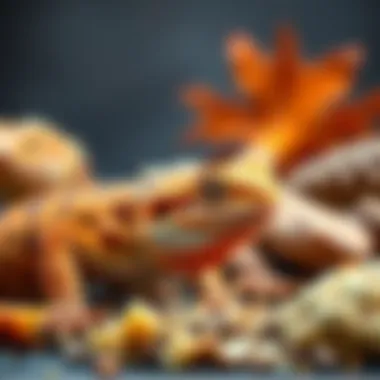
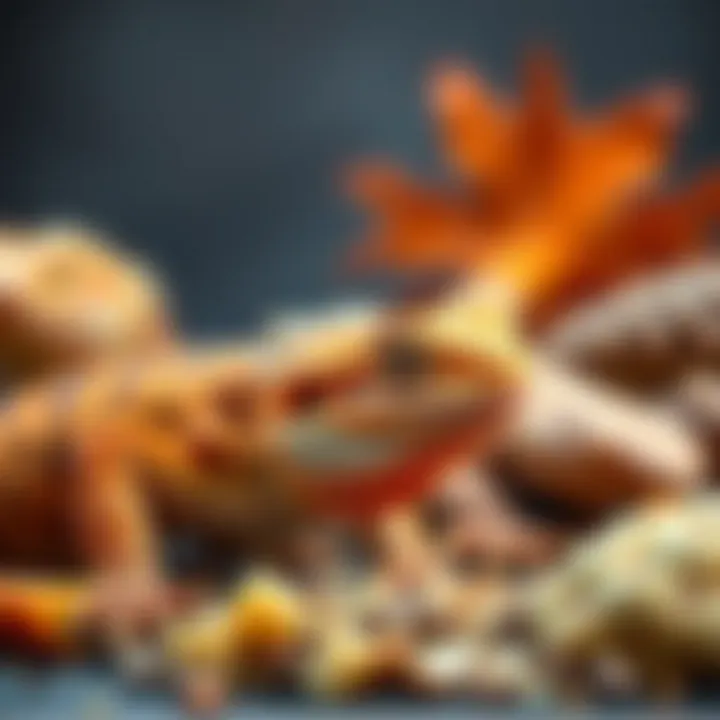
- Reptile carpet is easy to clean and provides a soft surface that is safe for your pet.
- Tile is another great option as it’s easy to maintain, and it allows for better temperature control, though it can be heavier and pricier.
- Sand can be tempting due to its natural appearance; however, it carries a risk of impaction if ingested. While some owners use it, others firmly recommend against it.
Choosing the right substrate can make a world of difference in keeping things tidy and ensuring your bearded dragon doesn’t eat anything detrimental. The bottom line is, it should be something that’s easy to clean, safe for your pet, and helps maintain a pleasant aesthetic in the enclosure.
Proper Heating and Lighting
Bearded dragons are ectothermic; they rely on external heat sources to regulate their body temperature. This means appropriate heating is critical for maintaining their health and wellbeing in captivity. Set up a basking area with a heat lamp that reaches between 95°F to 110°F (35°C to 43°C).
- UVB Lighting is also key in your setup. It mimics sunlight, which is essential for the production of vitamin D3, aiding calcium absorption. The UVB light should be on for around 10 to 12 hours each day.
- Hang the light 12-18 inches above the basking area for optimal effects, crafting that sun-kissed vibe your dragon craves.
Also, providing a cooler area (between 75°F to 85°F or 24°C to 29°C) is important as it lets your pet self-regulate according to its needs.
Humidity and Ventilation Needs
Humidity levels must reflect that of the arid environment where they originate. A range between 20% and 30% is ideal. This can help with shedding and respiratory health. You can monitor humidity levels with a hygrometer to ensure the conditions remain stable. If it gets too dry, a light misting can help.
But don't overdo it! Too much moisture can lead to respiratory problems and other issues. Proper ventilation is also vital to ensure that airflow is constant, preventing the buildup of heat and humidity that can jeopardize your lizard’s health.
An adequate habitat setup mimics their natural environment and contributes to a healthier, happier bearded dragon.
Summing it up, the ideal habitat for your bearded dragon involves careful consideration of size, substrate, heating, and humidity needs. Putting in the time and effort to create this environment pays off with a thriving, active dragon. Keep it cozy, and your reptilian friend will be in for a treat!
Nutrition and Diet
Nutrition plays a crucial role in the overall health and longevity of a bearded dragon. A well-balanced diet not only boosts their immune system but also impacts their growth, energy levels, and behavior. Understanding the nutritional needs is essential for any owner wishing to nurture a thriving pet. A comprehensive diet that mixes insects, vegetables, and sometimes fruits, helps mimic their natural feeding habits. Additionally, proper diet mitigates the risk of common health issues associated with malnutrition, such as metabolic bone disease.
Understanding Bearded Dragon Diets
Bearded dragons are omnivores, which means they require a mixture of food sources in their diet. Their eating patterns change as they mature. Baby bearded dragons generally consume more protein in the form of insects, whereas adults need more plant matter. The diet should reflect these stages of life.
It's vital to offer a varied diet that includes:
- Insects – crickets, mealworms, and roaches are popular choices.
- Vegetables – collard greens, kale, and squash provide essential nutrients.
- Fruits – offered sparingly, things like berries and mango can be treats.
This broad spectrum of food promotes digestive health and encourages proper hydration.
Feeding Insects: A Vital Component
Insects are a cornerstone of a bearded dragon’s diet, primarily due to their high protein content. Young dragons, in particular, need a significant portion of their diet to consist of insects to support their rapid growth. The best choices include crickets and dubia roaches since they are easier to digest and are rich in nutrients.
When feeding insects, consider including:
- Variety: Rotate between different insects to prevent dietary deficiencies.
- Size Control: Ensure insects are appropriate in size; they shouldn’t be larger than the space between the dragon’s eyes.
- Gut-loading: Feed your insects nutritious foods prior to offering them to your dragon to enhance their nutritional value.
One important note is to avoid wild-caught insects due to the risk of pesticides and parasites.
Vegetables and Fruits to Include
While insects are vital, vegetables should make up a significant part of the adult bearded dragon’s diet. Leafy greens and other veggies are packed with vitamins and minerals.
Choose from:
- Leafy Greens: Dark, leafy vegetables like mustard greens and turnip greens should be staples.
- Colorful veggies: Bell peppers and carrots can add vibrant colors and essential nutrients.
- Fruits: Fruits offer sweetness and some vitamins, though these should only be occasional treats.
Important: Always wash vegetables thoroughly to remove any pesticide residues before offering them to your pet.
Supplements and Vitamins
Even with a balanced diet, bearded dragons may require supplements to meet all their nutritional needs, especially since indoor environments may not provide them with all necessary nutrients.
Consider these supplements:
- Calcium: Sprinkle calcium powder on insects before feeding to prevent metabolic bone disease.
- Vitamin D3: This vitamin is crucial if your dragon doesn’t bask under UVB lighting regularly.
- Multivitamins: Providing a multivitamin supplement monthly ensures they’re getting a broad spectrum of nutrients.
It's essential to follow recommended dosages, as over-supplementation can lead to health issues.
By carefully considering and curating the diet for your bearded dragon, you foster not only a healthy companion but one that can thrive and show off its lively personality.
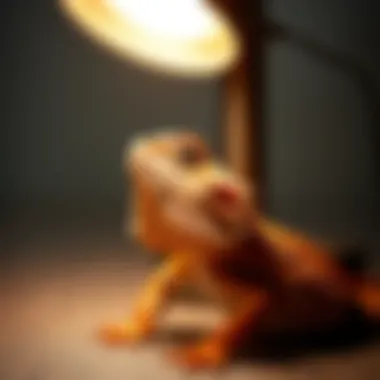
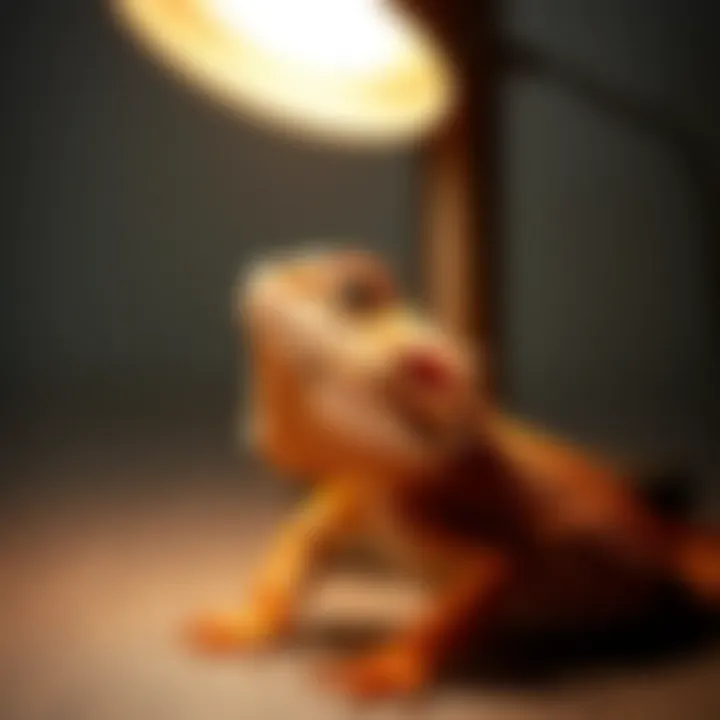
Health Care Considerations
When it comes to ensuring the well-being of your bearded dragon, health care considerations should be at the forefront of your priorities. These reptiles, while hardy, are not immune to health complications that can arise if they are not perfectlty cared for. Addressing health issues early on can enhance the quality of life for your pet and reduce the likelihood of severe conditions developing later.
From that perspective, understanding their biology and specific needs plays a critical role in creating a healthy environment. The elements you need to focus on include diet, enclosure conditions, and behavioral cues. All these factors intertwine to promote not just survival, but a thriving existence for your bearded dragon.
Common Health Issues in Bearded Dragons
Bearded dragons can face a range of health issues, some more common than others. Identifying these issues early can spare your pet unnecessary suffering. Among the most frequent are metabolic bone disease, respiratory infections, and parasites.
- Metabolic Bone Disease (MBD): This occurs when there is a calcium deficiency, often exacerbated by lack of UVB exposure. Symptoms may include lethargy, swelling, or deformities in bones and joints.
- Respiratory Infections: Symptoms often present as a runny nose, wheezing, or lethargy. If you spot these, swift veterinary attention is vital.
- Parasites: Internal and external parasites can wreak havoc on your dragon's health. Regular stool checks are recommended to keep these at bay.
These issues underscore the importance of routine health assessments, ensuring your bearded dragon stays fit and lively.
Signs of Illness to Watch For
Spotting early signs of illness can be a game changer when it comes to your bearded dragon’s health. Just like humans, reptiles can display a wide array of symptoms indicating something is amiss. Here are some signs you should never dismiss:
- Changes in Appetite: If your bearded dragon shows a sudden disinterest in food, it could be a red flag pointing to various health concerns.
- Lethargy: Unusual drop in activity levels can indicate underlying issues. A normally active bearded dragon shouldn't be lounging around like a couch potato.
- Abnormal Bowel Movements: Pay attention to changes, whether that's diarrhea or constipation; they can signal dietary or health issues.
Staying attuned to these behaviors can help in determining when veterinary advice is needed. Prompt action can make all the difference.
Regular Veterinary Check-ups
While bearded dragons might seem low-maintenance, they still benefit from routine veterinary check-ups. Establishing a relationship with a knowledgeable vet can aid significantly in keeping your pet healthy. Every six months is often recommended for general wellness checks, but any noticeable changes in behavior or health should prompt earlier visits.
During a check-up, your vet can perform several crucial evaluations:
- Physical examination for any visible signs of illness or discomfort.
- Fecal analysis to check for parasites.
- Diet evaluation, where the vet can offer advice tailored to your bearded dragon’s specific needs.
Maintaining a connection with a professional ensures you're not just reacting to issues as they arise, but rather taking a proactive approach to your dragon’s health.
Behavior and Socialization
Understanding the behavior and socialization of bearded dragons is key to ensuring a healthy and happy pet. Unlike some reptiles that are more solitary, bearded dragons can develop social behaviors and enjoy interaction with their human caregivers. This aspect of their care contributes significantly to their overall well-being.
Their natural instincts and social tendencies shape how they react to their environment and to people. Recognizing these behaviors is crucial for mitigating stress and creating a nurturing atmosphere. Owners who learn to read their bearded dragon's body language can respond appropriately, fostering trust and a bond that enhances the dragon's life.
Understanding Their Natural Behavior
In the wild, bearded dragons live in a variety of habitats, from dense forests to vivid deserts. This diversity influences their behaviors significantly. Generally, they exhibit a combination of diurnal activity and basking habits. Bearded dragons are known to bask on rocks or branches during daylight, soaking up the sun's rays to regulate their body temperature.
Some common behaviors to observe include:
- Basking: They often spend hours basking under heat lamps in captivity, imitating natural sunlight and regulating their warmth.
- Digging: To create burrows or hide in the wild, these dragons dig, while in captivity, they might perform this behavior when bored or stressed.
- Head Bobbing: This behavior signals dominance or excitement, particularly during mating seasons.
- Arm Waving: A submissive gesture, often seen when a dragon encounters another dragon; it serves as a display of non-aggression.
Understanding these behaviors helps owners provide an enriching environment. If a bearded dragon frequently digs or displays signs of stress, it may indicate the need for environmental adjustments or the introduction of enrichment activities.
Handling and Bonding Techniques
Establishing trust through careful handling is essential for a well-socialized bearded dragon. It's important to approach them calmly and gently, allowing the bearded dragon to feel secure in its owner's presence. Here are some practical tips for developing a strong bond:
- Start Slow: Begin by allowing the bearded dragon to acclimate to your presence. Spend time near the enclosure, letting it observe you without pressure.
- Gentle Touch: When the dragon seems comfortable, try gently reaching in and offering a hand. Move slowly to prevent startling it.
- Positive Reinforcement: Reward calm behavior with your bearded dragon's favorite treat, like a small piece of vegetable or a tiny insect, to create positive associations with handling.
- Consistency is Key: Regular, gentle handling will reinforce trust over time. Long intervals between interactions may lead to stress or anxiety.
"The better you understand their natural behaviors, the more effective your bonding will be. Bearded dragons thrive on consistent, positive interaction."
Engaging with your bearded dragon not only solidifies that bond but also contributes to your pet's psychological health. As they become more accustomed to handling, they demonstrate an array of social behaviors, such as approaching for snacks or showing curiosity through investigating their environment.
Common Myths and Misconceptions
When it comes to keeping bearded dragons as pets, there’s a wealth of information out there, but not all of it shines a light on the truth. Addressing myths and misconceptions about these reptiles is essential for ensuring their well-being. Misinformation can lead to poor care practices and, ultimately, a shorter lifespan for these unique creatures. Therefore, it is crucial for current and prospective pet owners to distinguish fact from fiction when it comes to bearded dragons.
One of the most common myths revolves around their diet. Some people believe that bearded dragons can thrive solely on vegetables, thinking that they are herbivores. In reality, bearded dragons are omnivorous and require a balanced diet that includes both insects and plants. Failing to provide this mix can result in malnutrition and health complications. Another prevalent myth is about their activity level; many think bearded dragons are lazy and don't need much interaction or space. However, these reptiles thrive on mental and physical stimulation, so a larger habitat with opportunities for climbing and hiding is necessary for their well-being.
Understanding these misconceptions not only enhances our care practices but also solidifies the bond that forms between humans and their scaly companions. For instance, misunderstanding their social behavior can lead to frustration when a bearded dragon is not as interactive as one would hope. It’s vital to be aware that each dragon has unique preferences and personalities, influencing how they react to handling and social interactions.
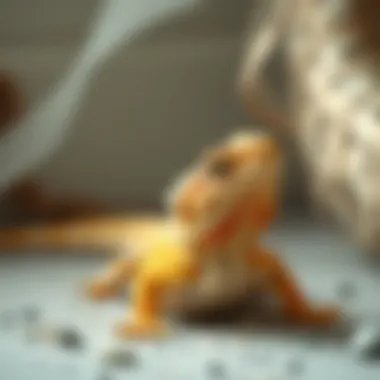
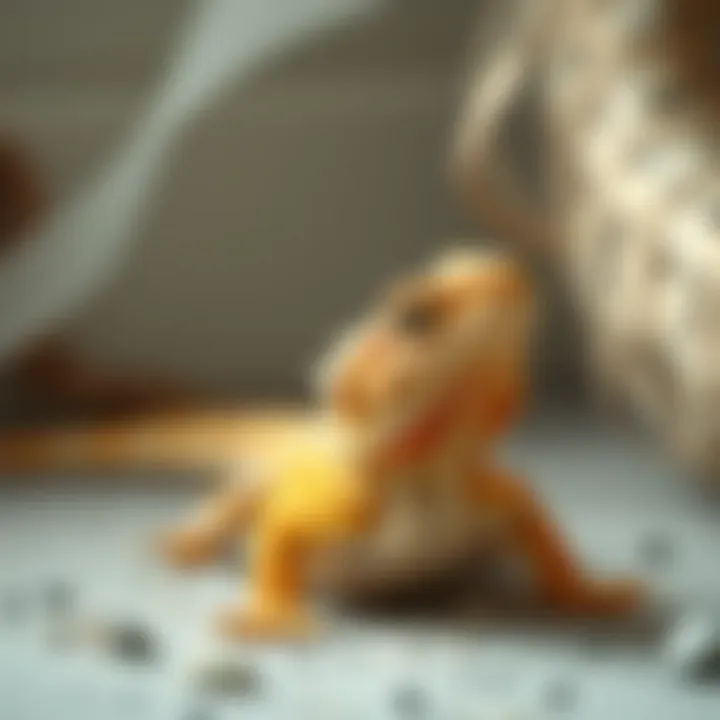
Key Benefits of Recognizing Myths
- Improved Care: Knowing the facts leads to better diet and habitat management, resulting in healthier dragons.
- Enhanced Relationship with Pets: Understanding their behaviors allows for better interactions and bonding.
- Longer Lifespan: Accurate information can lead to preventative health measures, ensuring a longer, healthier life for your bearded dragon.
By debunking these myths, owners can ensure they are part of a thoughtful, informed caregiver community, setting their bearded dragons up for thriving instead of merely surviving.
Debunking Popular Myths
Let’s dive into some of the most widespread misconceptions that are floating around, shall we? Here are a few myths debunked:
- Bearded Dragons are Just Lazy:
- They Can Live on Lettuce Alone:
- Heating is Optional:
- All Dragons are the Same:
- They Only Need Water When They’re Thirsty:
- Many folks think their dragons spend all day lounging because they have a "low-energy" lifestyle. In reality, these lizards have healthy activity levels, especially in their natural habitat.
- Just mentioning this one might make reptile owners groan. Lettuce is not only low in nutrients but can also lead to digestive issues. A varied diet is crucial, including high-protein insects.
- Some owners underestimate the need for proper heating. Inadequate temperature can lead to serious health issues. A basking spot at around 100 to 110 degrees Fahrenheit is necessary, along with cooler areas to help regulate their body temperature.
- New owners often think all bearded dragons behave the same way. Each dragon has its own personality, and understanding this can change the handling experience significantly.
- It's a common belief that lizards know when they need water. However, bearded dragons can often be dehydrated without outward signs. Regularly providing fresh water is essential for their health.
"It's not just about keeping a bearded dragon; it's about understanding the creature, its needs, and its ways of life."
By approaching bearded dragon care with a clear understanding, we not only foster better health in our pets but also enrich our own experiences with these fascinating reptiles.
Closure
In summing up, understanding the intricate details of bearded dragon care is not just beneficial; it's vital for the well-being of these unique reptiles. The insights shared throughout this guide have likely illuminated the essential aspects of maintaining a healthy habitat, providing a balanced diet, and recognizing potential health concerns.
This comprehensive approach allows owners and prospective adopters to cultivate an enriching environment that mirrors the natural conditions these creatures thrive in. From setting up the perfect terrarium to ensuring proper nutrition with a mix of insects and vegetables, each facet plays a role in their overall health and happiness.
Key Considerations:
- Bearded dragons are not just pets; they require dedication and knowledge.
- Regular veterinary check-ups cannot be overlooked; they are key for early detection of issues.
- A socialized bearded dragon tends to be more confident and less stressed, which reflects positively on their health.
By debunking common myths and fostering an understanding of their behaviors, you equip yourself with not just practical care tips, but a deep-seated respect for these remarkable reptiles. The are countless benefits to be gained from an informed approach to bearded dragon care, particularly regarding the emotional bond that can form between pet and owner. Understanding their needs ensures owners can provide the best possible care, leading to a fulfilling and enriching journey for both.
"An animal’s eyes have the power to speak a great language." - Martin Buber
For those looking to dive deeper or share their experiences, consider visiting forums on Reddit or checking reliable sources like the American Veterinary Medical Association at avma.org, where you can learn more about the specifics of reptile care.
Resources for Further Reading
When it comes to owning a bearded dragon, staying informed is essential for providing the best possible care. Resources for further reading not only enhance your knowledge but also help you navigate the complexities of bearded dragon care. Here’s why investing time in additional literature is invaluable:
Expanding Knowledge
Additional reading allows you to delve deeper into various aspects of bearded dragon husbandry. Articles, books, and guides authored by seasoned reptile experts provide insights into subjects that might not be covered as comprehensively in general care guides. By exploring resources dedicated to specific areas such as
- breeding practices,
- captive behavior,
- and advanced health care,
you arm yourself with techniques that can make a tangible difference in your dragon’s life.
Potential Resources
Several platforms offer a wealth of information. Consider leveraging various sources to broaden your understanding:
- Books: Titles like "The Bearded Dragon Manual" provide detailed care guidelines and habitat setup instructions.
- Online Communities: Websites such as Reddit serve as vibrant hubs for discussions, where you can ask questions and share experiences with fellow enthusiasts.
- Scientific Journals: Academic articles and studies that can be accessed through .edu websites often present the latest findings in reptile care and nutrition, providing details that far surpass anecdotal knowledge.
Importance of Research in Care
The more you learn, the better equipped you become to recognize minor issues before they develop into serious problems. Researching practices like:
- understanding specific dietary requirements
- recognizing stress triggers
- tailoring your reptile's environment
can prevent common pitfalls.
Staying Updated
The field of reptile care is always evolving. New discoveries in nutrition, health, and behavioral studies can significantly alter best practice recommendations. Following reputable websites and blogs can keep you informed about the latest trends and advice in the bearded dragon community.
For instance, check out resources such as Britannica for in-depth articles on the biology and care of bearded dragons.
Educating yourself always pays off in the long run; it fosters not only a healthy pet but also a fulfilling experience for you as an owner.















